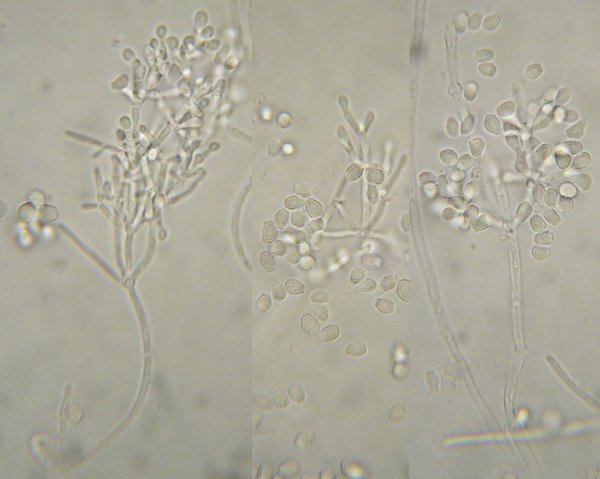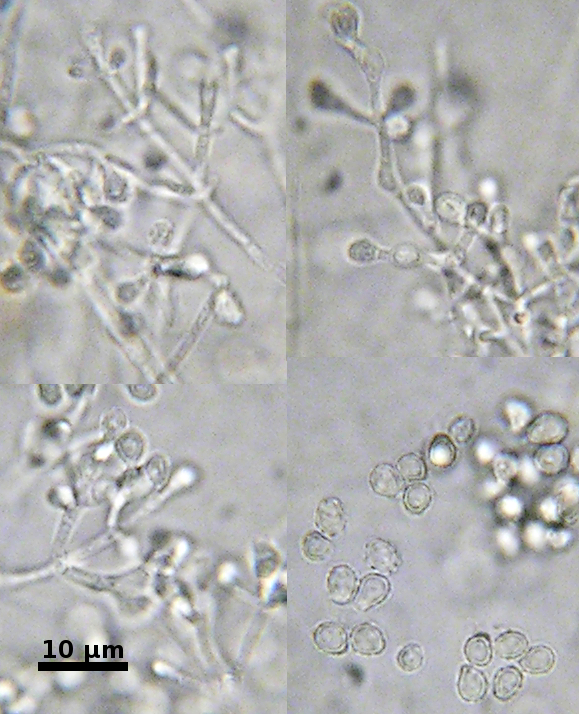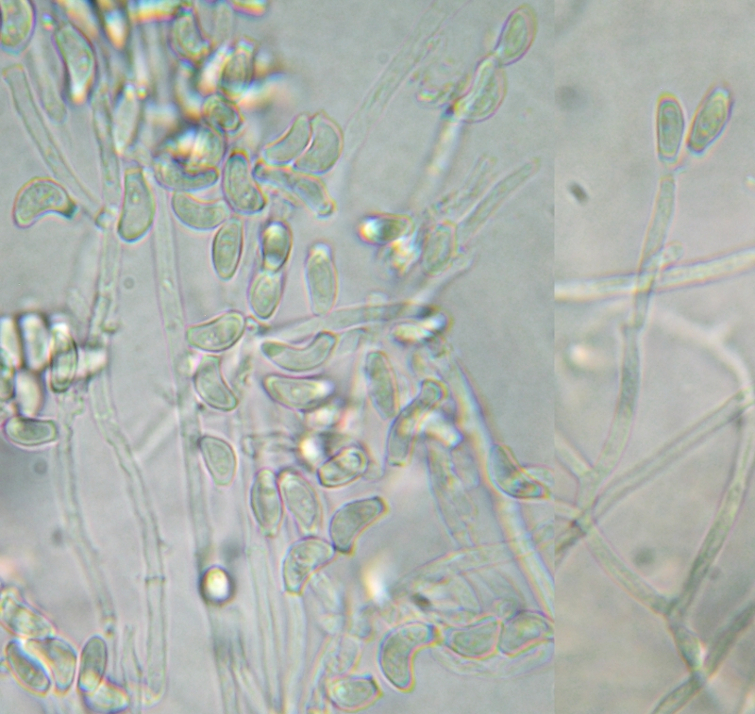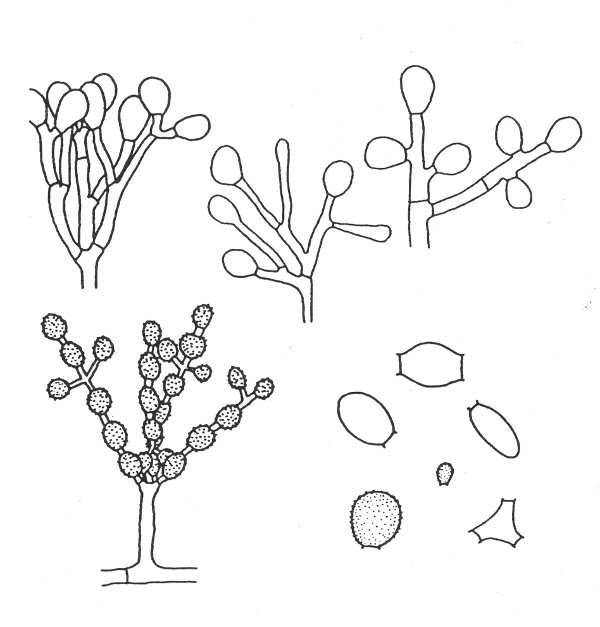Main page <> Index of descriptions <> Previous description <> Geomyces <> Next description
Geomyces




Characterized by short but distinct conidiophores that are branched above and which bear chains of spores formed directly from the cells of the branches. Often only the tips of the branches become converted into spores. The spores (conidia) are 1-celled and may be white or yellow.
Species of Geomyces are generally found in relatively cool habitats, although many can grow well at room temperature. Some species are psychrophilic, that is they are adapted to cold conditions and cannot tolerate temperatures above the mid-teens celsius. These psychrophiles are often abundant in soils at high latitudes or in cold habitats such as mines and caves. Geomyces destructans, cause of white-nose syndrome in bats, thrives on hibernating bats in caves where the year-around temperature remains below 10° C. The picture at right shows the curved conidia characteristic of G. destructans. Occurring in soil, leaf litter and animal materials such as dung and decomposing tissues.
Classification: Myxotrichaceae (Myxotrichales). Holomorph: Pseudogymnoascus. Ref: Hayes 2012; Sigler and Charmichael 1976; Van Oorschot 1980
Main page <> Index of descriptions <> Previous description <> Geomyces <> Next description